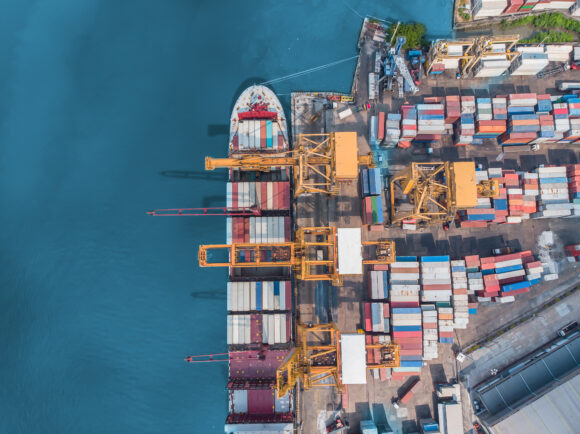The supply chain crisis has seared itself into popular imagination through empty shelves where toilet paper once stood and a desperate shortage of baby formula. But the ripple effects that emanate from globally disrupted supply chains wash over far more than consumer packaged goods.
For commercial insurers, the supply chain crisis is a systemic event that can amplify risk exposures across commercial property, commercial auto and general liability, among other lines of business.
Public Enemy #1: Inflation
Inflation is on many minds of late and one culprit behind climbing costs is the supply chain crisis. Across a range of finished goods and raw materials, constrained supply and soaring demand have converged to drive prices skyward.
For commercial property insurers, lumber and material shortages plus rising labor expenses have helped drive up reconstruction costs by 13.5% from April 2021 to April 2022. Components and commodities used for vehicle repairs (semiconductors, aluminum, steel, etc.) have increased in price, which could have the downstream effect of increasing the cost to settle both first-party physical damage and third-party property damage liability claims in commercial auto.
Loss reserves carried by insurers intended to pay future claims can also be impacted by the rate of inflation. If the inflation rate is higher than the rate built into the reserves, insurers may need to draw down reserves faster than anticipated. This dynamic may also pose an acute challenge for long-tail lines of insurance such as general liability, where losses can be paid out over a longer time period.
Downstream Bottlenecks; Dangers of Delays
When supplies of anything are tight, wait times for said supplies tend to increase. Across residential and commercial construction, builders are waiting for critical supplies. Auto repair shops are similarly in the slow lane when it comes to restocking needed gear. These longer wait times aren’t simply an inconvenience — they can add up to additional lost income for insureds, who can’t begin operations in a new building or access a vehicle for business use. This, in turn, could lead to potential business interruption claims for insurers.
If garage and auto repair shops experience significant delays for new or replacement vehicle parts, it may also mean that vehicles are sitting in garages, shops, or lots for what could be days-to-weeks on end. Each day a vehicle lingers in a lot is another day where the shop or dealer may have a liability exposure from said vehicle.
Delays in sourcing spare parts for vehicles can also ripple into the rental market. Insurers that cover rental vehicles and rental vehicle agencies may see an uptick in claims and costs as more businesses turned to rentals while they wait for repairs. This increase in use could lead to more loss of use claims by the rental agencies themselves for vehicles that are damaged or totaled by renters.
The Costs of Compensating for Supply Chain Disruption
The supply chain disruption does not just manifest itself as a lack of supply. It can also lead to stockpiling, as retailers fearful of empty shelves or manufacturers worried about component shortages buy more than they need. This excess inventory must be stored somewhere, either on site or off (sometimes in the same containers it was shipped in). This pile of inventory can be a tempting target for thieves, heightening property theft exposures.
Storage risks may also impact builders, many of whom are pre-ordering lumber to avoid delaying projects. Increased wood storage could mean steeper property losses in the event of a fire.
Supply shortages can also lead to creative solutions, or the use of alternate materials. This creates the risk that the replacement parts may not function as well as the original, amplifying the risk of potential defects after a job is finished or a product is sold.
Some builders are simplifying designs and trying to cut costs by relying on panelized houses — that is, homes that are partially constructed in an off-site facility, moved to the final location, and then finished. If sections of a building are constructed offsite, the insured could be at risk that local construction laws or ordinances weren’t followed for the offsite build.
From ‘Just in Time’ to ‘Just in Case’
The modern insurance industry was born to protect trans-oceanic supply chains. Today, while the global “just in time” supply chain buckles under the strain of the pandemic, insurers have the opportunity to work closely with their clients to help them understand how supply chain disruptions — and efforts to mitigate them — may be impacting their risk exposures.
Was this article valuable?
Here are more articles you may enjoy.



 Nearly Half of 100 Largest P/C Insurers Destroy Value: ACORD
Nearly Half of 100 Largest P/C Insurers Destroy Value: ACORD  CRC Group Signs Agreement to Acquire Euclid Transactional
CRC Group Signs Agreement to Acquire Euclid Transactional  Litigation Funding, Other New Laws in SE States Could Impact Liability Insurance
Litigation Funding, Other New Laws in SE States Could Impact Liability Insurance  Kansas Man Sentenced to Probation for Insurance Fraud
Kansas Man Sentenced to Probation for Insurance Fraud 


